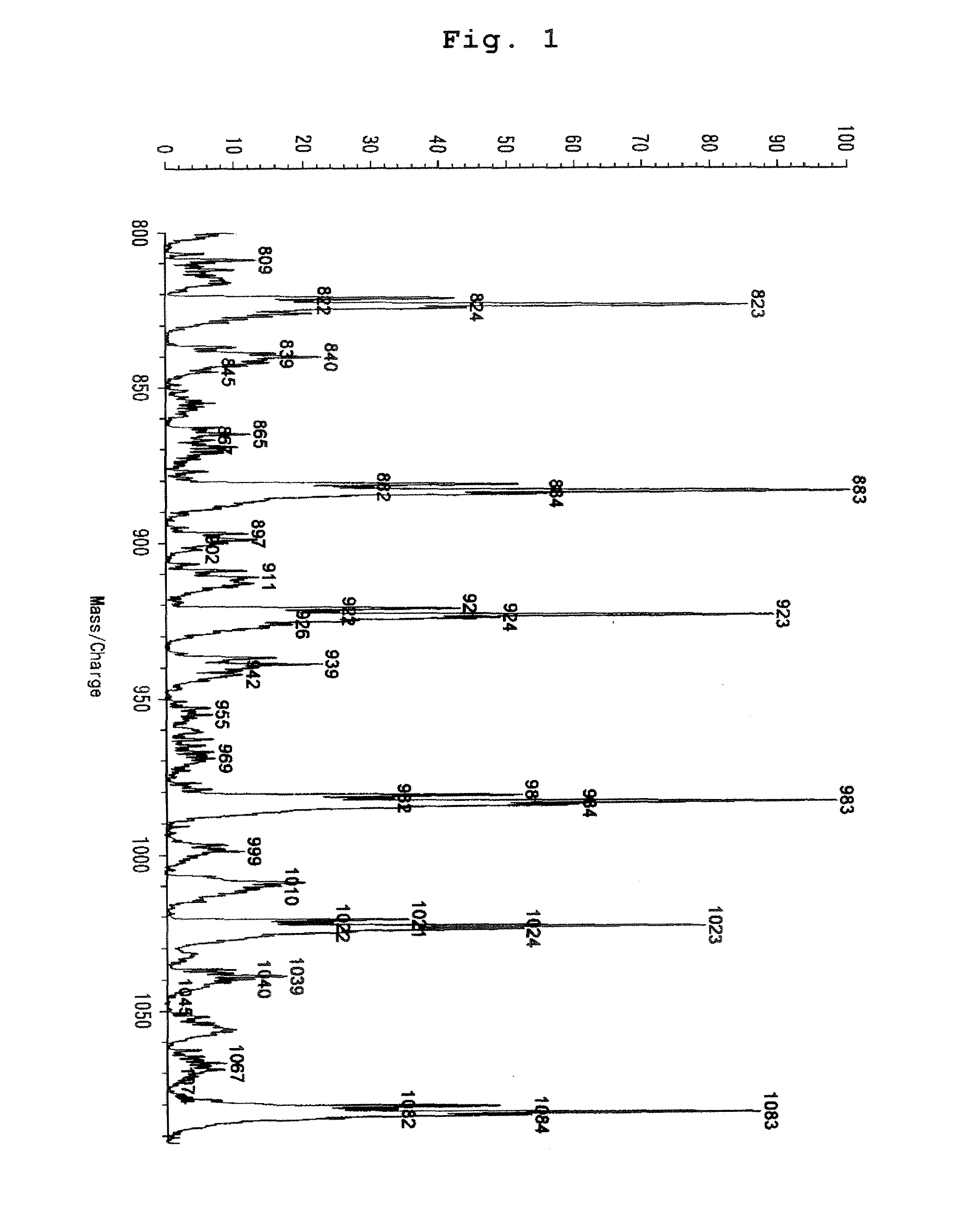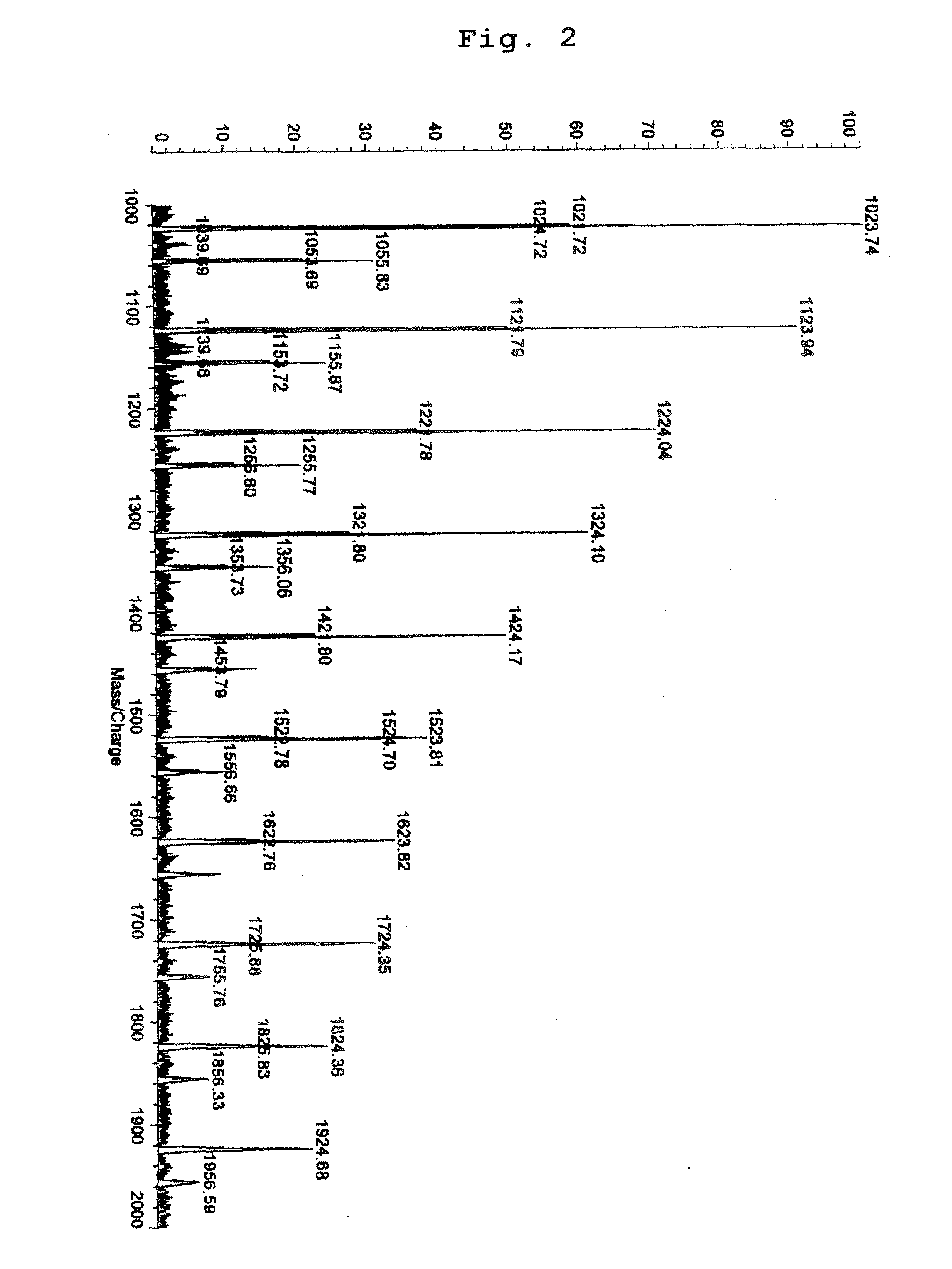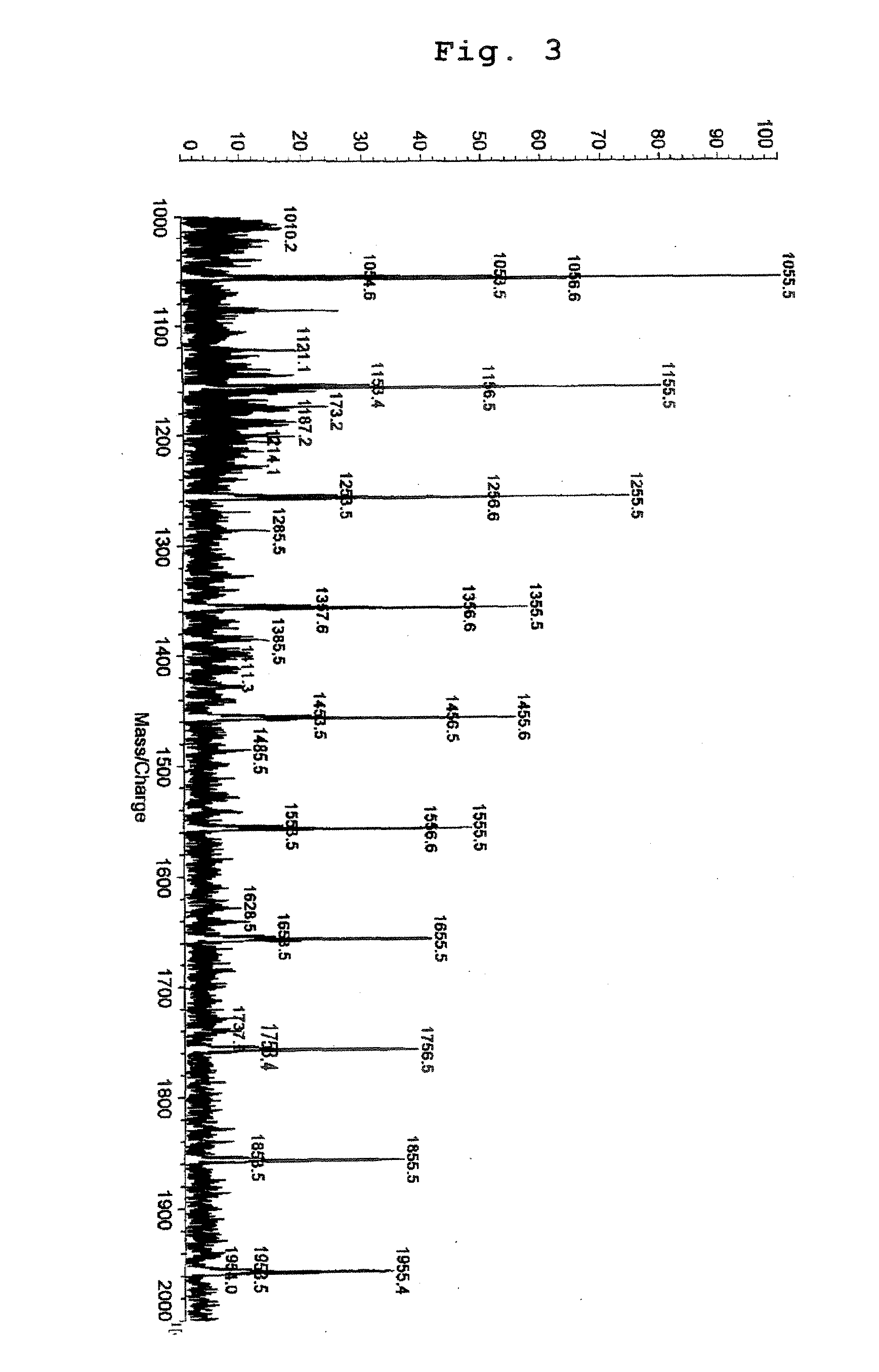Oil-based ink compositions for inkjet printers
- Summary
- Abstract
- Description
- Claims
- Application Information
AI Technical Summary
Benefits of technology
Problems solved by technology
Method used
Image
Examples
examples
[0048]Based on the following production examples of fixing polymers (J1-J11), examples of inks (K1-K12) making use of those fixing polymers (J1-J10) and comparative examples of inks (L1-L5) making use of the fixing polymer (J11) and conventional fixing polymers, respectively, the present invention will next be described more specifically. In the following production examples, examples and comparative examples, the designations of “part” or “parts and “%” are on a weight basis unless otherwise specifically indicated. It is to be noted that the present invention shall not be limited to the following production examples, examples and comparative examples.
Production of Fixing Polymer J1
[0049]Into ethylene glycol monobutyl ether acetate (300 g) maintained at 100° C., a mixture of methyl methacrylate (200 g) and t-butylperoxy-2-ethylhexanoate (1.8 g) was added dropwise over 1.5 hours. Subsequent to the dropwise addition, they were reacted at 100° C. for 2 hours. The reaction mixture was t...
examples 1-12
[0070]Inks K1-K12 of the present invention were each formulated by combining the corresponding one of the solutions of the fixing polymer J1-J10 obtained as described above, a vinyl chloride / vinyl acetate copolymer (only for the ink K8 of the present invention), the colorant (Pigment Red 122), the dispersant and the corresponding solvents as shown in Table 1 or Table 2, and mixing them into a uniform mixture such that the viscosity became 7 mPa·s to 14 mPa·s as measured by a viscometer “AMVn” (trade name; manufactured by Anton Parr GmbH). It is to be noted that as appreciated from the above-described formulation of the inks, the formulation of each ink was carried out by firstly combining portions of its corresponding solvents, the colorant and the dispersant to prepare a pigment dispersion and then adding the solution of the corresponding one of the fixing polymers and the remaining portion of the corresponding solvents while stirring the pigment dispersion as a uniform dispersion ...
PUM
| Property | Measurement | Unit |
|---|---|---|
| Glass transition temperature | aaaaa | aaaaa |
| Molecular weight | aaaaa | aaaaa |
| Ratio | aaaaa | aaaaa |
Abstract
Description
Claims
Application Information
 Login to View More
Login to View More - R&D
- Intellectual Property
- Life Sciences
- Materials
- Tech Scout
- Unparalleled Data Quality
- Higher Quality Content
- 60% Fewer Hallucinations
Browse by: Latest US Patents, China's latest patents, Technical Efficacy Thesaurus, Application Domain, Technology Topic, Popular Technical Reports.
© 2025 PatSnap. All rights reserved.Legal|Privacy policy|Modern Slavery Act Transparency Statement|Sitemap|About US| Contact US: help@patsnap.com



